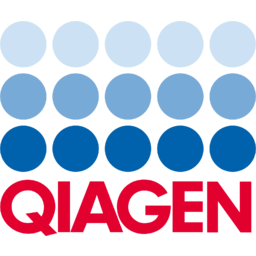
P/E ratio for Qiagen (QGEN)
P/E ratio as of May 2024 (TTM): 29.5
According to Qiagen 's latest financial reports and stock price the company's current price-to-earnings ratio (TTM) is 29.5353. At the end of 2022 the company had a P/E ratio of 26.9.
P/E ratio history for Qiagen from 2001 to 2023
PE ratio at the end of each year
| Year | P/E ratio | Change |
|---|---|---|
| 2022 | 26.9 | 8.8% |
| 2021 | 24.7 | -26.91% |
| 2020 | 33.8 | -118.28% |
| 2019 | -185 | -552.32% |
| 2018 | 40.9 | -76.89% |
| 2017 | 177 | 111.52% |
| 2016 | 83.7 | 65.77% |
| 2015 | 50.5 | 7.74% |
| 2014 | 46.8 | -41.6% |
| 2013 | 80.2 | 140.06% |
| 2012 | 33.4 | -0.91% |
| 2011 | 33.7 | 8.54% |
| 2010 | 31.1 | -7.53% |
| 2009 | 33.6 | -14% |
| 2008 | 39.1 | -40.68% |
| 2007 | 65.8 | 104.34% |
| 2006 | 32.2 | 12.33% |
| 2005 | 28.7 | -11.01% |
| 2004 | 32.2 | -19.22% |
| 2003 | 39.9 | 22.9% |
| 2002 | 32.5 | -58.06% |
| 2001 | 77.4 |
P/E ratio for similar companies or competitors
| Company | P/E ratio | P/E ratio differencediff. | Country |
|---|---|---|---|
 Thermo Fisher Scientific TMO | 37.3 | 26.44% | 🇺🇸 USA |
 Becton Dickinson BDX | 42.7 | 44.67% | 🇺🇸 USA |
 General Electric GE | 19.7 | -33.16% | 🇺🇸 USA |
 Hologic HOLX | 39.0 | 32.13% | 🇺🇸 USA |
 Bio-Techne TECH | 49.3 | 67.05% | 🇺🇸 USA |
How to read a P/E ratio?
The Price/Earnings ratio measures the relationship between a company's stock price and its earnings per share. A low but positive P/E ratio stands for a company that is generating high earnings compared to its current valuation and might be undervalued. A company with a high negative (near 0) P/E ratio stands for a company that is generating heavy losses compared to its current valuation.
Companies with a P/E ratio over 30 or a negative one are generaly seen as "growth stocks" meaning that investors typically expect the company to grow or to become profitable in the future.
Companies with a positive P/E ratio bellow 10 are generally seen as "value stocks" meaning that the company is already very profitable and unlikely to strong growth in the future.